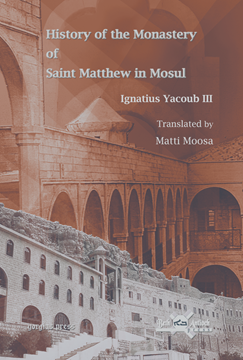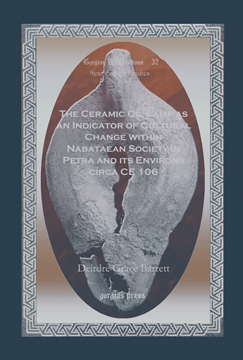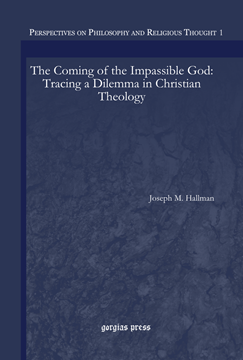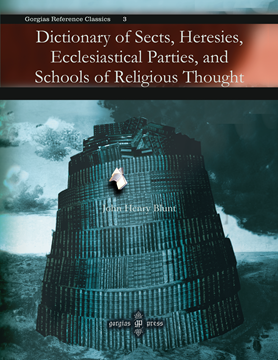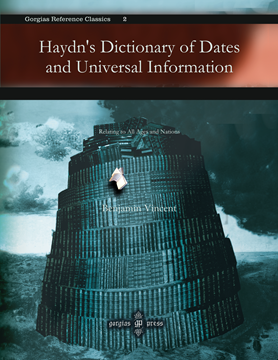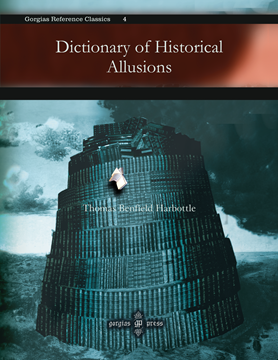History of the Monastery of Saint Matthew in Mosul
Translated by Matti Moosa
ISBN: 978-1-59333-788-9
Located north of Mosul, St. Matthew’s Monastery—commonly known as Dayr Sheikh Matti—is perhaps the most ancient religious institution in Iraq. Although the Syriac life story of St. Matthew was published together with that of St. Behnam by Paul Bedjan in 1891, and translated into Arabic by Elias Behnam, this present account is more extensive and informative. It includes in-depth physical and spiritual descriptions of the monastery as an outstanding institution which played a significant role in the history of the Syrian Orthodox Church of the East. Mar Ignatius Jacob III offers insight into the monastery’s learned superiors, metropolitans and magnificent library.
$145.00 (USD) $87.00 (USD)
The Ceramic Oil Lamp as an Indicator of Cultural Change within Nabataean Society in Petra and its En
ISBN: 978-1-59333-628-8
How did the Nabataeans view their world at the time of the Roman annexation in CE 106? If it is possible to detect an altered perception after their monarchy was dissolved at that time, how can we be sure it was authentic and not a veneer, masking the identity of a disaffected people? One approach is to consider religious practice as a diagnostic for identity within Nabataean society. Religious practice is examined through the ceramic oil lamp, a ubiquitous vessel that can portray socio-political and religious symbolism and cultural hybridization.
$134.00 (USD) $80.40 (USD)
Tracing a Dilemma in Christian Theology
ISBN: 978-1-59333-792-6
This book describes the development of the Christian understanding of God from the second to the eighth century as witnessed by major theologians who gradually realized that the Incarnate Word made flesh was not the God of the philosophers. They helped construct the great dogmas of the Christological councils. Beginning with the Apologists and ending with Maximus Confessor, the theological tradition overcame the notion of impassible deity in favor of the humble God of Christian faith, the Word made flesh.
$139.00 (USD) $83.40 (USD)
Dictionary of Sects, Heresies, Ecclesiastical Parties, and Schools of Religious Thought
Series: Kiraz References Archive 3
ISBN: 978-1-59333-796-4
In an attempt to organize the swiftly-growing diversity in Christianity during the nineteenth century, the author compiled a learned compendium of the known religious groups of his day. A unique glimpse into the history of early-modern religious thought, this reference work includes extensive articles on the various collections of believers both Christian and non-Christian. Blunt, in a move that presaged the more comprehensive modern studies of the phenomenon of religious diversification, included exotic religions that were beginning to be taken seriously during his century.
$244.00 (USD) $146.40 (USD)
Haydn's Dictionary of Dates and Universal Information
Relating to All Ages and Nations
Series: Kiraz References Archive 2
ISBN: 978-1-59333-797-1
This book was so popular during the lifetime of the original author that it went through six editions. This reprinting of the acclaimed seventeenth edition of Vincent’s revision of Haydn’s work is a delightful reminder of the basic information that was considered so important during the advent of the classic encyclopedias and reference works being produced in the nineteenth century. Arranged alphabetically, this historic work contains hundreds of articles that pertain to important dates and events in human history.
$281.00 (USD) $168.60 (USD)
Dictionary of Historical Allusions
Series: Kiraz References Archive 4
ISBN: 978-1-59333-799-5
Useful for anyone interested in the social world of the nineteenth century, this dictionary was conceived as a desk reference to assist in finding, in a single source, the events behind the modern world. Intentionally without providing the length and depth of analysis of a standard history, this book provides in a brief paragraph the essentials of various historical references. Treaties, social and religious movements, battles, laws, and straightforward historical events are all chronicled alphabetically for ease of use.
$159.00 (USD) $95.40 (USD)
